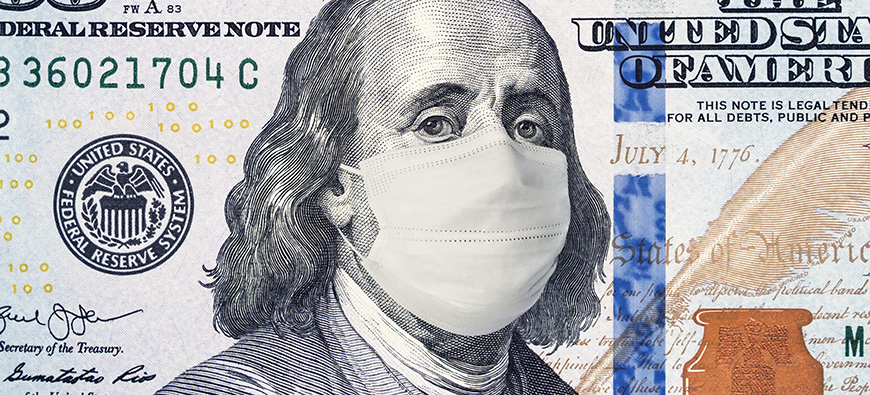
Why This Crisis Is Different
The USS Economy is steaming into dangerous waters and the country’s banks are trapped aboard with the rest of the passengers.
A public health policy of social distancing and lockdowns in response to the COVID-19 virus is creating a devastating impact on the U.S. economy, which in recent years has been driven by consumer spending and a historically low unemployment rate. According to the Bureau of Labor Statistics, the U.S. labor market added 273,000 jobs in February, while private sector wages grew 3%. Moody’s Investors Service also says that the U.S. economy grew 2.3% last year, with personal consumption expenditures contributing 77% of that growth.
That is changing very
quickly. Brace yourself for the virus economy.
Wall Street firms are
forecasting that the U.S. economy will contract sharply in the second quarter –
with Goldman Sachs Group expecting a 24% decline in gross domestic product for the
quarter.
“The sudden stop in U.S.
economic activity in response to the virus is unprecedented, and the early data
points over the last week strengthened our confidence that a dramatic slowdown
is indeed already underway,” Goldman’s chief economist Jan Hatzius wrote in a
March 20 research note.
My memory stretches back to the thrift crisis in the late 1980s, and there are others that have occurred since then. They’ve all been different, but they generally had one thing in common: They could be traced back to particular asset classes – commercial real estate, subprime mortgages or technology companies that were grossly overfunded, resulting in dangerous asset bubbles. When the bubbles burst, banks paid the price.
What’s different this time
around is the nature of the underlying crisis.
The root cause of this crisis isn’t an asset bubble, but a public health emergency that is wreaking havoc on the entire U.S. economy. Enforced governmental policies like social distancing and sheltering in place have been especially hard on small businesses that employ 47.5% of the nation’s private workforce, according to the U.S. Small Business Administration. It puts a lot of people out of work when those restaurants, bars, hardware stores and barber shops are forced to close. Economists expect the U.S. unemployment rate to soar well into double digits from its current rate of just 3.5%.
Bank profitability will be under pressure for the remainder of the year. It began two weeks ago when the Federal Reserve Board began cutting interest rates practically to zero, which will put net interest margins in a vice grip. One bank CEO I spoke to recently told me that every 25-basis-point drop in interest rates clips 4 basis points off his bank’s margin – so the Fed’s 150 basis point rate cut reduced his margin by 20 basis points. Worse yet, he expects the low-rate environment to persist for the foreseeable future.
Making matters worse, banks
can expect that loan losses will rise over time – perhaps precipitously, if we
have a long and deep recession. Many banks are prepared to work with their
cash-strapped borrowers on loan modifications to get them through the crisis;
federal bank regulators have said lenders will not be forced to automatically
categorize all COVID-19 related loan modifications as troubled debt
restructurings, or TDRs.
Unfortunately, a prolonged recession is likely to outpace most banks’ abilities to temporarily forego principal and interest payments on their troubled loans. A sharp rise in loan losses will reduce bank profitability even more.
There is another way in which
this crisis is different from previous crises that I have witnessed. The
industry is much stronger this time around, with roughly twice the capital it
had just 12 years ago at the onset of the subprime mortgage crisis.
Think of that as first
responder capital.
During the subprime mortgage
crisis, the federal government injected over $400 billion into the banking industry
through the Troubled Asset Relief Program. The government eventually made a
profit on its investment, but the program was unpopular with the public and
many members of Congress.
The full extent of this banking crisis remains to be
seen, but hopefully this time the industry can finance its own recovery.



